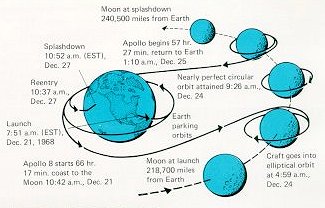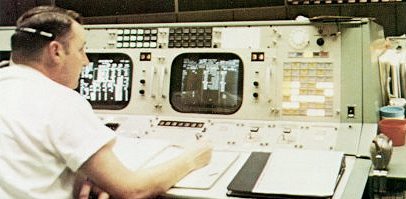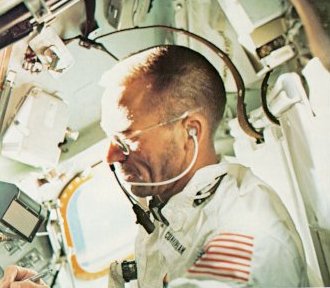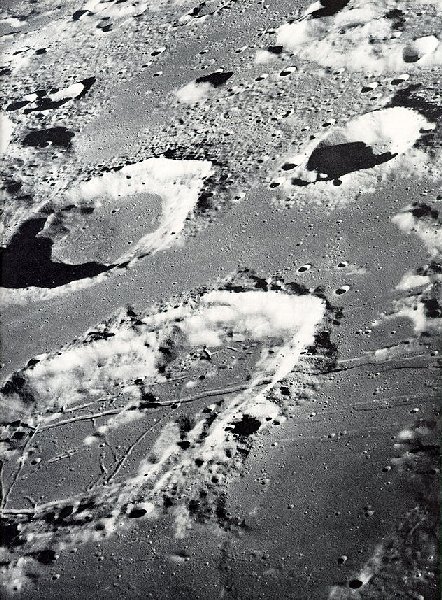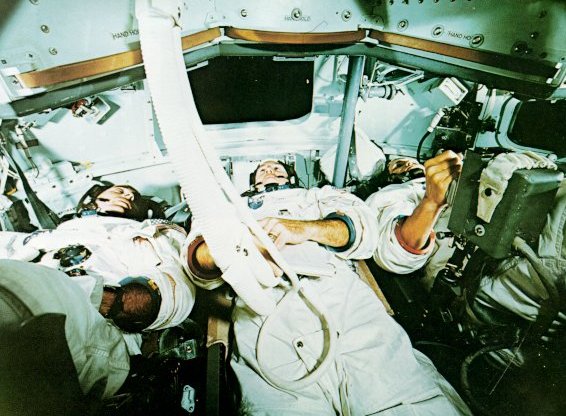
|
| Intently watching the dials above them, the crew of Apollo 8, Anders , Lovell, Borman, left to right, rehearse for their lunar orbit mission inside a simulator at the Kennedy Space Center. Simulation was a central feature of the training given flight crews and mission controllers. |
